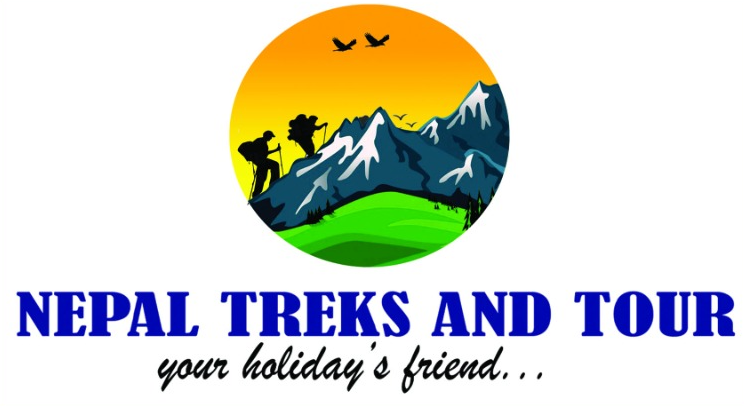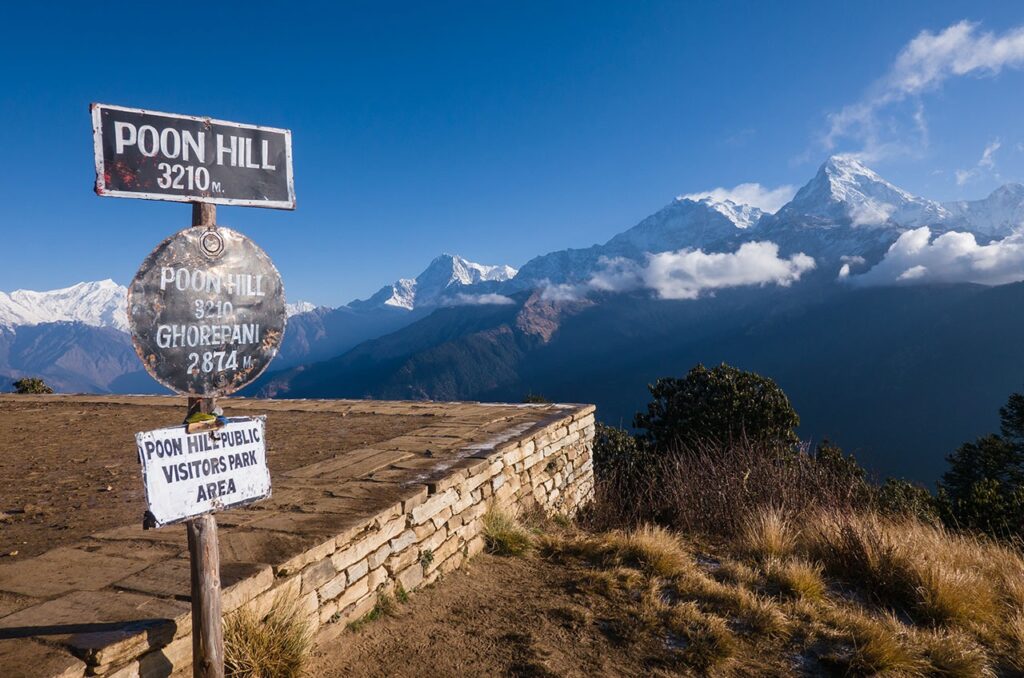Planning a trek to Poon Hill in Nepal is an exciting step! One of the most important questions you’ll have is: “When should I go?” The short answer is that the best time for PoonHill trek is during the autumn (September to November) and spring (March to May) seasons. These periods offer the perfect mix of great weather, clear skies, and beautiful scenery.
But to give you the most accurate and useful information, we’ll break down each season so you can decide what is best for you. This blog is designed to give you direct answers so you can find the information you need quickly.
Autumn: The Season of Clear Skies (September – November)
If you want the most famous and beautiful views, autumn is the perfect choice. This is the peak season for trekking in Nepal, and for a good reason.
Why is autumn the best?
Crystal-Clear Views: After the monsoon rains, the air becomes clean and fresh. This means you get stunning, unobstructed views of the mighty Annapurna and Dhaulagiri mountain ranges from the Poon Hill viewpoint.
Perfect Weather: The temperatures are mild and pleasant. It’s warm and sunny during the day, making the walk very comfortable. Nights can be cool, especially at higher altitudes like Ghorepani, but not too cold.
Golden Landscapes: The hills and terraced fields turn a beautiful golden color, creating a magical backdrop for your photos.
Local Festivals: This season often lines up with major Nepali festivals like Dashain and Tihar. You might get to see and experience some of the local culture and traditions up close.
Spring: The Season of Blooming Rhododendrons (March – May)
Spring is the second-best time for the PoonHill trek. If you love flowers and vibrant colors, this is your season.
Why is spring a great time?
Rhododendron Blooms: The main highlight of spring is the national flower of Nepal, the rhododendron. The forests on the trek become a sea of red, pink, and white flowers. It’s truly a sight you’ll never forget.
Warm Days: The weather is mild and comfortable for trekking. The days are long, giving you more time to enjoy the trail.
Lush Greenery: Everything around you is green and full of life, making the scenery feel very fresh.
While the views can sometimes be a little hazy because of the warmer air, the blooming forests more than make up for it.
What About Other Seasons? (Off-Peak Trekking)
While autumn and spring are the most popular, you can still trek to Poon Hill in other seasons if you are prepared for them.
Winter (December – February)
Weather: It gets cold, especially at night and in the mornings. There can be snowfall, which can make the Poon Hill viewpoint look like a winter wonderland.
Crowds: The trails are much quieter and less crowded, giving you a more peaceful trekking experience.
Views: The skies are very clear in winter, so mountain views are often sharp and beautiful.
What to Expect: You will need to pack very warm clothes, including a good down jacket and a warm sleeping bag.
Monsoon (June – August)
Weather: This is the rainy season in Nepal. The trails can be wet, muddy, and slippery.
Views: The mountains are often hidden behind clouds, and the views can be limited.
Lush Scenery: The hills are incredibly green and vibrant. You’ll see beautiful waterfalls and a different kind of natural beauty.
What to Expect: You will need good waterproof gear and trekking poles for safety. Leeches can be a problem in the lower forests, but it is not a big issue. The trails are very quiet, with very few other trekkers.
Best Time For PoonHill Trek Trek by Month
September: End of monsoon, clear skies begin. A great transition month.
October: Peak season. Perfect weather and views. Best to book in advance.
November: Weather is getting cooler, but views are still spectacular. Trails are still busy but starting to quiet down.
December: Start of winter. Cold nights, but very clear days.
January: Coldest month. You might see snow. Trails are quiet.
February: Weather starts to warm up, but it’s still cold. Quiet trails.
March: Start of spring. Rhododendrons begin to bloom. Pleasant weather.
April: Peak of the rhododendron season. A very popular month for trekking.
May: Warmer weather, but it can get hazy or rainy towards the end of the month as monsoon season approaches.
June, July, August: Monsoon season. Rain, mud, and cloud cover. Recommended only for experienced trekkers who want solitude.
Choosing the best time to visit Poon Hill depends on what you want to see and experience. Whether it’s the clear skies of autumn, the vibrant flowers of spring, or the peaceful trails of winter, this trek offers a unique adventure for everyone.
To learn more and book your worry-free Poon Hill trek, please visit our website: Nepal Treks and Tour. Our local experts are ready to answer any of your questions and help you plan your perfect adventure.
PoonHill Trek Frequently Asked Questions (FAQs)
Q1: How long does the Ghorepani PoonHill trek take?
A: The standard Ghorepani Poon Hill trek usually takes 4 to 5 days to complete. However, it can be customized to be as short as 3 days for fast trekkers or extended to 8-10 days to include other beautiful villages like Ghandruk.
Q2: How difficult is the PoonHill trek? Is it for beginners?
A: The trek is considered easy to moderate. It is an excellent choice for beginners and families as it doesn’t go to extreme altitudes. You should have a reasonable fitness level and be ready for many stone steps, especially on the way to Ulleri.
Q3: Is the Poon Hill trek dangerous? What are the main risks?
A: The Poon Hill trek is one of the safest in Nepal. The main risks are minor injuries like sprained ankles from uneven trails or blisters. Altitude sickness is highly unlikely, as the highest point is only 3,210m, which is well below the risk zone for most people.
Q4: Can I trek to PoonHill solo?
A: As of 2023, the Nepal government requires all foreign trekkers to hire a licensed guide for all trekking routes, including Poon Hill. This rule was put in place to ensure the safety of trekkers and to support local employment. So, solo trekking is no longer permitted by law.
Q5: What is the highest point of the trek? Is altitude sickness a concern?
A: The highest point is Poon Hill viewpoint at 3,210 meters (10,531 feet). Altitude sickness (AMS) is generally not a concern on this trek because the sleeping altitude at Ghorepani is lower (2,874m) and the ascent is gradual.
Q6: What kind of food and accommodation are available on the trek?
A: You will stay in local guesthouses and teahouses along the trail. The rooms are basic with twin beds, and most have shared bathrooms. Food is excellent, with a menu that includes local Nepali dishes like Dal Bhat (a hearty meal of rice, lentil soup, and curry), as well as a variety of international foods like pasta, pizza, and soups.
Q7: Do I need a sleeping bag?
A: It is highly recommended to bring your own sleeping bag, especially if you are trekking in the colder months (December-February). Most guesthouses provide blankets, but a personal sleeping bag (rated for at least 0°C or colder) ensures a warm and comfortable night’s sleep.
Q8: What should I pack for the PoonHill trek?
A: A basic packing list should include:
Sturdy, comfortable hiking boots
Layered clothing (moisture-wicking base layer, fleece jacket, down jacket)
Waterproof and windproof outer layer
A daypack (around 30-40L)
Water bottles or a hydration pack
Sun hat, sunglasses, and sunscreen
A headlamp (for the early morning Poon Hill hike)
A basic first-aid kit
Q9: How much does the PoonHill trek cost?
A: The total cost varies widely depending on whether you trek with a guide and porter, the duration of your trip, and your spending habits. On average, a 4-5 day trek with a local company can range from $400 to $700 per person, which typically includes permits, food, accommodation, and guide/porter fees.
Q10: Can I find Wi-Fi and electricity on the trail?
A: Yes, most teahouses have Wi-Fi and charging facilities for phones and cameras. However, you often have to pay a small fee per hour to use them. The connection can be slow and unreliable, so be prepared to be offline sometimes.
Q11: Are there ATMs on the trek?
A: No, there are no ATMs on the trekking route. It is essential to carry enough Nepali Rupees in cash with you from Pokhara to cover all your expenses, including food, water, and tips.
Q12: Is the trek suitable for older people or children?
A: Yes, it is. The Poon Hill trek is a great option for multi-generational groups. The pace is slow, the highest point is not extreme, and the trail is well-maintained. We have helped many families with children and older parents successfully complete this trek.
Q13: What is the famous stone staircase on this trek?
A: The famous staircase is the climb to Ulleri. It has around 3,200 stone steps. While it sounds difficult, the climb is broken into a few hours of walking, and many trekkers find it to be a rewarding challenge that makes the rest of the trek feel easier.
Q14: What is the best way to get from Kathmandu to Pokhara?
A: You can travel from Kathmandu to Pokhara by either a domestic flight (about 25 minutes) or a tourist bus (about 6-7 hours). A flight is much faster and more scenic, while a bus is more budget-friendly.







